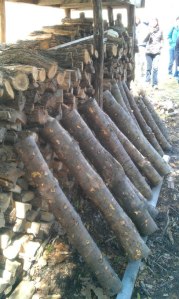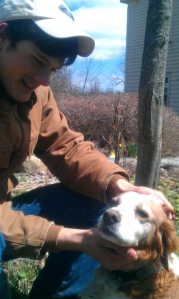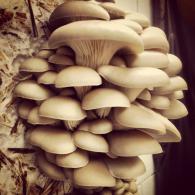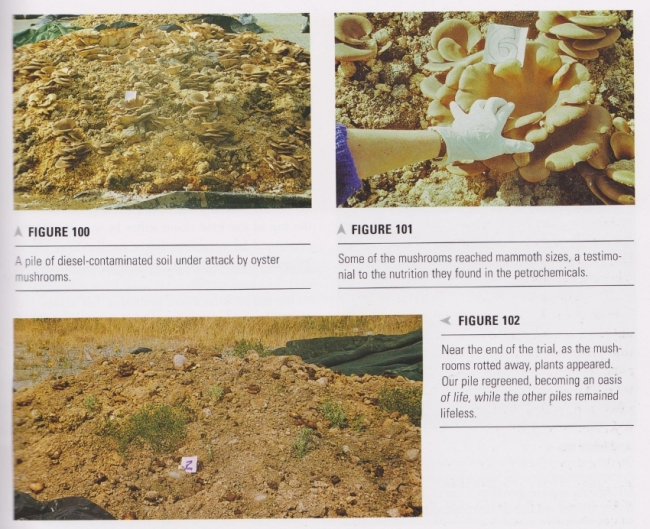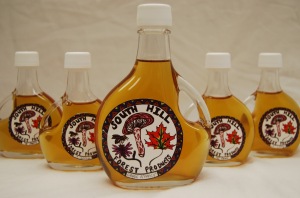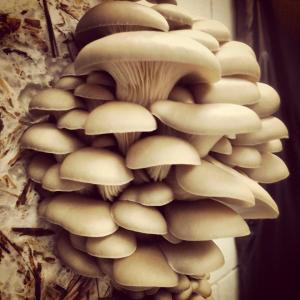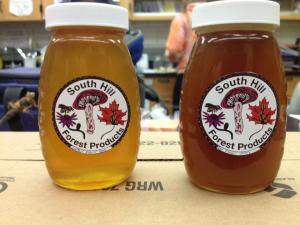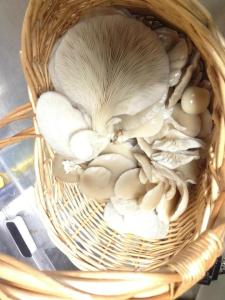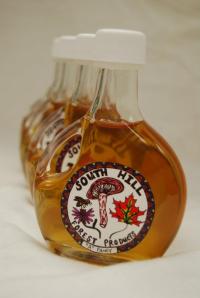On Sunday, South Hill Forest Products took a field trip to Hawk Meadow Farm, a shiitake mushroom farm in Trumansburg, NY, owned and operated by Anne and Steve Sierigk.
Anne and Steve started out with Acorn Designs, their graphic design business, and grew shiitake mushrooms on the side. Shiitakes became more and more lucrative for them, however, as Steve started building relationships with local restaurants. Now they sell to specialty restaurants on a weekly basis, all within 30 miles of the farm, and produce hundreds of pounds of shiitakes each summer.
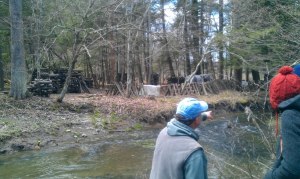
Steve shows us his growing area. Logs are soaked in the creek, and then stacked on a gravel platform to help deter slugs.
They offer a wide range of products from their farm besides shiitakes, although that is their main product. They are also producing some vegetables such as rhubarb, onions, and garlic, and beginning to sell black locust posts which are naturally rot resistant.
Expanding from shiitake growing, they are also starting to offer shiitake tinctures made from cold-weather strains. These shiitake varieties are part of traditional Japanese herbalism and have been found to boost the immune system, is a potent antiviral and antibacterial, and can reduce platelet aggregation.
As a class, we got to inoculate poplar and bitternut hickory logs with shiitake and oyster mushroom spawn from Field and Forest. We drilled 1/2-inch holes along the log, 6 inches apart in a row and 2 inches between each row, offset by 3 inches. We then plugged each hole with spawn-infused sawdust, and covered the hole in wax to keep out competing fungi.
To top off our morning on the farm, Anne and Steve shared with us some carrot soup and miso soup, made from ingredients grown in their own garden — and their own shiitake mushrooms! We also learned that in a macrobiotic diet, a bowl of miso soup each day keeps the doctor away.
We are so lucky to have Steve and Anne as our local shiitake resource! Be sure to check out the classes they offer on shiitake cultivation, herbalism, and more.
Oh, and their dogs are adorable.

